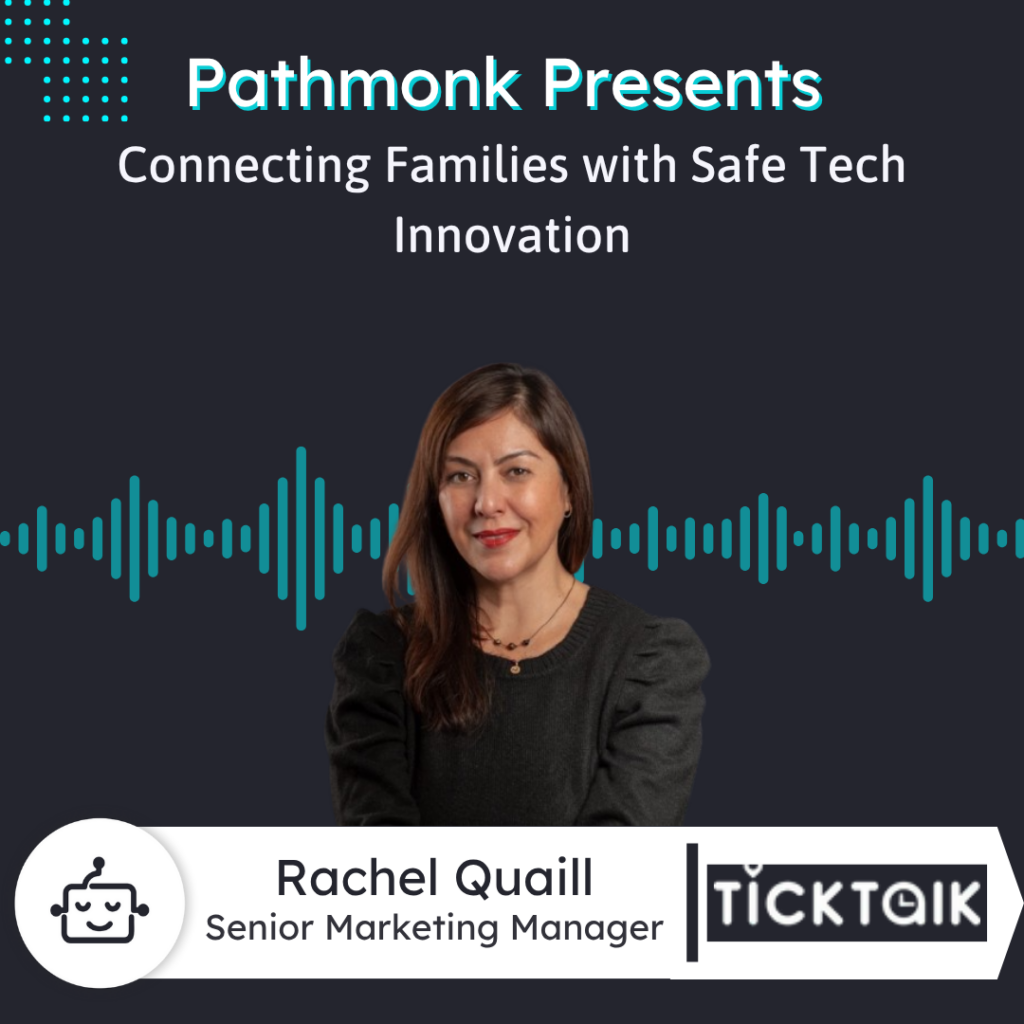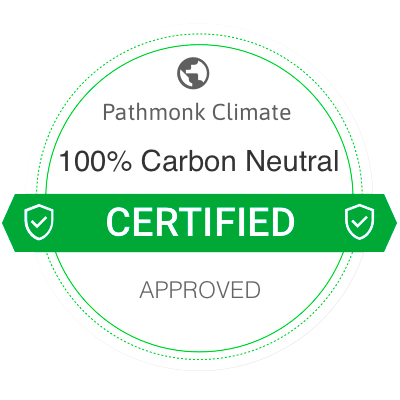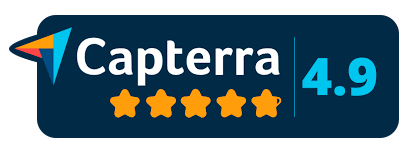
Introduction
Join us on Pathmonk Presents with Rachel Quailliam, Senior Marketing Manager at Tick Talk Technologies, creators of the Tick Talk smartwatch—a safe phone alternative for kids.
Rachel shares how Tick Talk fosters parent-child bonds without social media risks. Discover strategies for driving e-commerce sales through Amazon, Shopify, and influencer partnerships, plus tips for optimizing website SEO and user journeys.
Learn how Rachel tackles bots, abandoned carts, and data anomalies to boost conversions. Tune in for actionable insights to scale a niche brand! Visit myTick Talk.com to explore their innovative product.
Increase +180%
leads
demos
sales
bookings
from your website with AI
Get more conversions from your existing website traffic delivering personalized experiences.

Rick: Pathmonk is the AI for website conversions. With increasing online competition, over 98% of website visitors don’t convert. The ability to successfully show your value proposition and support visitors in the buying journey separates you from the competition online. Pathmonk qualifies and converts leads on your website by figuring out where they are in the buying journey and influencing them in key decision moments with relevant micro-experiences like case studies, intro videos, and much more.
Stay relevant to your visitors and increase conversions by 50%. By adding Pathmonk to your website in seconds, let the AI do all the work and increase conversions by 50% while you keep doing marketing as usual. Check us out on pathmonk.com.
Hi everyone. Welcome to today’s episode of Pathmonk Presents. Today we are joined by Rachel Quaill. She’s the Senior Marketing Manager at TickTalk Tech. Rachel, welcome to the show.
Rachel Quaill: Hi, thank you for having me.
Rick: Of course. I’m excited about this. We were just talking offline. There are a few things happening over at TickTalk, but I want to start with the basics. So what’s the big idea behind your company? If you were explaining it to someone new or a friend over coffee, how would you describe what you do?
Rachel Quaill: Yeah, so we have our one flagship product, which is the TickTalk 5 at the moment. And I like to think of our company as more of a communication company. Our goal and our whole entire ethos is to create a bond, a way for parents to communicate with their children without giving them a cell phone. So it’s a safe cell phone alternative. They have the ability to do all the things that a cell phone can do without the harms of the internet, as well as social media. We have a broader message that we like to convey, but the flagship product is a kid’s smartwatch.
Rick: Yes. As a parent, that’s reassuring, ’cause I have small kids. One is four and the other is almost two. And I’m already thinking, when the time comes—because nowadays it’s so common to see kids with phones and everyone has their own kind of ideal parenting, whatever—but yeah, I don’t like it. I didn’t have a phone growing up, and I understand technology evolves and whatnot. But knowing what I know, as we talked a little bit offline, that you guys are expanding and visiting new markets—that’s really reassuring, knowing that there’s a product out there that’s thought for both the kid and the parent. So I love it.
Maybe we can touch a little bit on new things, right? Is there anything that keeps you excited at the moment? Any new launches, any new events, or anything like that?
Rachel Quaill: Yeah, so we are going to launch a new model, which has pretty much been the pattern. We launch a model and then with the developments in technology—they’re so rapid nowadays—so we have to keep up with what’s trending, what’s happening in the tech industry, and especially when you’re thinking of a communication device. We launch a new product regularly, around every one and a half to two years. So we’re going to launch a new model in 2026.
The difference is going to be—we’re going to change the band on the watch, so it’s a little bit more… that’s a little bit of a pain point for our users at the moment, so that’s going to be a little different. The big difference is going to be that we’re switching from a physical SIM card to an eSIM. That’s going to streamline a few things in the background as far as the purchasing journey, as well as making it easier when you’re setting up the watch with the parent app.
Rick: Of course, makes a lot of sense. Which I’m curious about—because obviously, this is a product for kids, right? But it is the parents that essentially buy them. So which type of customer do you think is the best fit for your products, and what kind of key problem do you solve for them at the moment?
Rachel Quaill: Yeah, we have a very niche product, so we’re going after a very predetermined demographic, which are parents between the age of—anywhere, depending on where you’re at in the world—it could be as early as 18 to 55. Grandparents also like to buy it because they like to stay in touch with their grandchild, especially around gifting holidays. So we’re open to that. Aunties, uncles, they want to buy it for their favorite niece or nephew. It’s pretty wide. And it’s geared towards children between the ages of 3 and 12. So we have a pretty wide range there. And we are, of course, marketing to parents because they’re the ones that hold the purse strings.
Rick: Of course. Let’s stay on that note. When it comes to sales, what do you see as your most effective acquisition channels? Maybe there’s a channel that you’ve optimized to drive consistent sales—social media, organic—but can you tell us a little bit about that?
Rachel Quaill: We have an entire ecosystem. I like to think that we have two markets or two ways to sell the product, which is Amazon, of course—we are highly rated on Amazon if you were to go and find us there—that’s obviously the biggest driver of sales. But we also have our Shopify site, myticktalk.com. That’s one way that we do that.
When we’re marketing on social media and using influencers, all the UGC content, of course we’re doing Google Ads, Meta Ads, dabbling with TikTok. We’re also on Walmart Marketplace. We just had a conversation with a Target partner yesterday, so we’re hoping to get onto the Target Marketplace soon. But we just do all of the things, right? Email marketing, SMS, we have our paid ads—all of those sorts of standard traditional marketing tools.
Rick: And you mentioned website is a big one, right? So I’m just curious, how much of a role does your website play in pulling in new customers? And maybe if you can expand a little bit on anything that you’ve seen that works really well when it comes to the website—or maybe on the other hand, anything you’ve got your eye on improving?
Rachel Quaill: Yeah, so it’s a constant battle with the website, because you have to think of SEO, so you’re constantly having to create new content, blogs, working with media. We have a PR agency that helps us get into media publications like Forbes, Good Housekeeping—all of the major publications. We’re trying to get into San Francisco Chronicle—we’re having an article coming out soon in there. So that’s one key way to drive people to our website.
But in the background, what a lot of companies aren’t aware of are all of these other things that could be happening. Shopify can have an update that you’re not aware of, so it’s preventing people from… You can see those rage clicks by using a tool like Lucky Orange, where you’re able to track the user’s journey on the website. Constantly checking sources and using software and tools such as that to check out what’s going on behind the scenes of a user’s journey on the website is really key.
For instance, right now we’re dealing with a lot of bots that are hitting our website. We noticed that we had a huge amount of abandoned carts—the increase was like 250%—yet our conversion rate was dropping. So you have to keep constantly checking things like that. And then when we did a little bit of digging and background and constant researching and testing, we found that it was coming all from one specific address, which was a non-address, but with a real email and a fake name.
And if you’re not constantly looking at those sorts of things, it can go unaccounted for. That also affects your email marketing list because they were getting into our email marketing list. So then I had to go into our Klaviyo account and block any user that has that specific address. And it’s going to skew the data on your GA4, your Google Analytics, and that’s going to skew the data for your PMAX on Google Ads and Meta Ads. So it’s just this whole IT ecosystem that you have to constantly check all the different points and constantly be aware and look at the data to really see: okay, what’s this anomaly? Why is it happening? So I think that’s really important.
Rick: Yeah, and you have to stay on top of it. And it sounds like you—that’s part of your job. Maybe let’s switch gears for a second and talk about you as a leader. What does your typical workday look like? Because maybe that involves that, but I’m sure there are many other things that you focus on day to day. So can you tell us a little bit about that? What’s the day in the life for you working at TickTalk?
Rachel Quaill: I started with TickTalk from the very beginning in 2018, so I’ve been lucky enough to see the growth and all the different launches of the different versions. I started when they had just phased out the TickTalk 1, and now here we are getting ready to launch the 6. In the beginning, I was doing all of everything, right? The email marketing, the social media management, creating ads—I was the one-stop shop.
Now we have a team since we’ve grown, so now I’m able to just touch base with them, make sure they’re staying on top of things. We brainstorm a lot. We meet—we have a hybrid model, so we work from home, but then when we are together in the office, we brainstorm. I’m constantly researching, looking at what other companies are doing, meeting with people such as you, just getting to know.
Today, I’m going to a conference in LA. So just trying to stay abreast of the latest things that are happening in the ecomm world. It’s getting a little bit more challenging for an ecomm business because of all of the things that I just mentioned a while ago. Amazon doesn’t make it easy. They want to stay the top competitor. They are now controlling what price we have on our Shopify site. So just trying to stay abreast of all of the latest trends is a big part of what I do.
Also, business growth. I work really closely with the CEO, the owner of the company, to meet with partners, to meet with potential partners, to make sure that we are growing and moving in the right direction with these partners. So yeah, it’s a lot of all of everything—and then, of course, monitoring and making sure everything’s moving and grooving correctly.
Rick: Of course. It sounds exciting. And there are a couple of things I want to follow up on. You repeated a couple of times: staying abreast of the trends. There’s a flood of content out there, and I’m curious about how you stay focused and keep learning. Maybe there are certain places, people, routines that you turn to for inspiration or staying ahead. How does that work for you?
Rachel Quaill: Nowadays, you just have to go on social media and scroll and see what’s trending. That’s one way. And then also just constantly looking at your competitors and seeing what they’re doing and checking to see what’s working. So yeah, just a lot of digging and doing your own research and being a user yourself is helpful.
Rick: Of course. Okay, before we wrap things up, Rachel, I want to—if you’re willing—jump into a rapid-fire segment of the podcast. It’s a bunch of questions. We’ll keep it light and engaging. There’s only one rule—unspoken rule, let’s say—for a concise question, we would love a concise answer. Would you be ready for that?
Rachel Quaill: Sure.
Rick: All right, let’s do it. Watching or reading?
Rachel Quaill: Reading.
Rick: Okay. What’s the last book or article that you picked up, and were there any gems or ideas that really stuck with you?
Rachel Quaill: I just finished Isabel Allende’s The Wind Knows My Name. It was more of a modern take on something that she normally writes—she’s more of a historical writer. But… I would say—gosh—something that I picked up from that…
Rick: It doesn’t have to be—because sometimes—
Rachel Quaill: Yeah. It was a great book, so I would recommend it.
Rick: Okay, great. Let’s say you had a magic wand and you could fix one frustrating thing in your marketing life with tech. What would it be?
Rachel Quaill: I already touched on it, but definitely being able to slap open my laptop and then it just tells me, like, “Hey, this is nefarious. Check it out. This isn’t working. This is broken. This is working.” So that would be great. Give me the data—I don’t want to have to go search for it, just give it to me.
Rick: Okay, good one. Let’s stay on that same note—what’s one repetitive task that you’d love to put on autopilot forever?
Rachel Quaill: Definitely checking Meta and Google Ads. Hate them. Love them.
Rick: If you could go back and give your past self a quick pep talk at the start of your journey in marketing, what advice would you give yourself?
Rachel Quaill: Keep learning.
Rick: Easy. Okay, I like it. I like it. Rachel, I want to thank you for being on the show with us today. And I also want to give you the last word—if someone forgets everything about the interview today, whatever we talked about, what is the one thing they should remember about the work you guys are doing at TickTalk?
Rachel Quaill: I would say that we are not just selling a product—we are selling a life experience for parents in this world of tech.
Rick: As I said, I’m a fan. So if anyone wants to check you guys out and maybe are interested in the product, how can they get in touch or how can they check it out?
Rachel Quaill: Yeah, so if you just go to myticktalk.com, that’s probably the best way. We are also on Amazon, but our website really does highlight all of the best features of our product.
Rick: Perfect. We’ll include the links and everything in the show notes. But Rachel, again, thank you for the conversation. I’m excited to see the new markets that you mentioned and how things expand for you guys. And yeah, hope to see you again soon before the year ends.
Rachel Quaill: Great. Thank you, Rick. I really had a great time. Thanks.
Rick: All right. Thank you, everyone.
Rachel Quaill: Bye.











